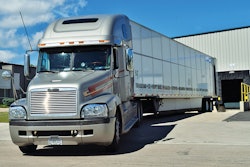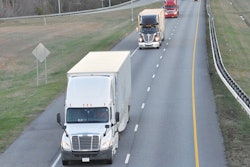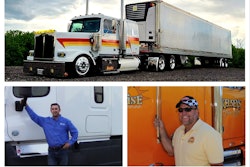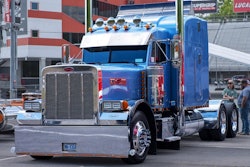PARTNERS IN BUSINESS TABLE OF CONTENTS »
What legal form works best for your operation?
There are different ways to set up an owner-operator business. Each business form has its advantages and disadvantages, and one may work better than another for your particular situation. The advice of a CPA, tax attorney or business services provider who specializes in trucking is recommended before a decision is made. Here are the six types of businesses:
SOLE PROPRIETOR. This is a business owned by one person. It is the least expensive, simplest and least regulated type of business structure. Unlike the other forms, there is no formal setup, as it begins when you start earning revenue as an owner-operator. Many leased owner-operators stay with this form, though it has its downsides.
One is liability protection. In the eyes of the law, the owner of a sole proprietorship is the business. In the event of an accident, you could be liable for millions of dollars in damages and medical expenses. That’s why it’s important to carry bobtail insurance (or unladen liability – see Chapter 16).
Also, debt incurred by the business is the responsibility of the owner. If your business gets into financial trouble, creditors can seize your house and other personal possessions.

PARTNERSHIP. A partnership is similar to a sole proprietorship but is owned by more than one person. The individuals forming the partnership are taxed separately, as they would be if they were sole proprietors. A partnership also can be formed easily, but a written agreement is recommended to spell out duties, responsibilities and financial terms. Your business services provider can help you draw up a simple written partnership agreement.
The advantage of a partnership might be in having access to extra start-up capital or in providing a co-driver who can help you drive more miles. To be successful, each co-driving partner should bring something to the table, such as financial skills or mechanical expertise. Each partner is liable for the actions of the other in a partnership.
There are two types of partnerships:
Family or nonfamily partnership. Members of a family can be partners. However, family members (or any other person) will be recognized as partners only if certain Internal Revenue Service criteria are met.
Husband-wife partnership. If spouses operate a business together and share in the profits and losses, they may be considered partners whether or not they have a formal partnership agreement.
LIMITED LIABILITY COMPANY. The LLC is a common form for independent owner-operators with their own authority.
Like the S Corp (discussed below), the LLC offers protection for owners, and profits can pass through the owner’s personal income tax return if the LLC has a sole-proprietor tax designation. This means you are not subject to double taxation such as in a C Corp. LLCs generally are simpler and more flexible than corporations.
However, an LLC can have an S Corp designation, in which case taxes are filed similarly to an S Corp. Each state treats LLCs differently. For instance, if the LLC is set up in Wisconsin and an accident occurs in another state, liability protection may be affected. LLCs can be expensive to set up.
LIMITED LIABILITY PARTNERSHIP. The LLP can be expensive and complicated to set up. It’s generally not recommended for owner-operators.
CORPORATION. A corporation is different from a sole proprietorship or partnership because it is treated as a separate entity from its owners, shareholders and employees. Incorporation laws differ from state to state. Setup cost varies from a few hundred dollars to a few thousand. In addition, incorporating requires numerous forms, records and formal annual meetings. Incorporating outside your home state can lead to problems.
Normally, incorporating is not a good choice for owner-operators because costs usually exceed benefits.
There are two types of corporations.
C Corp. The corporation pays taxes on the income it earns. The driver is an employee of the corporation and should receive a payroll wage W-2 from the corporation. If the driver does not receive a payroll wage W-2, the amount taken out of the corporation is a dividend and subject to double taxation both at the corporate and individual level. To set up a C Corp, you must file articles of incorporation with your state. Do-it-yourself kits are available, but it’s best to hire an attorney to avoid mistakes and to address state laws. This usually is not the best choice for an owner-operator.
S Corp. This allows the driver, still an employee, to report the income of the S corporation on his personal tax return. Since the income is taxable at the individual level, no double taxation exists. S Corp earnings are not subject to self-employment tax, but compensation must be considered “reasonable” or it immediately will be a red flag to the IRS and potentially trigger an audit. A good rule of thumb used by advisers at ATBS is to think about setting up an S Corp when net earnings consistently begin to exceed $70,000-$75,000 yearly. At that point, tax savings will be greater than the costs to set up and run the corporation.
Download the entire Partners in Business Manual
Chapter 1: Becoming your own boss
Chapter 2: Bookkeeping and business analysis
Chapter 3: Understanding your revenue and costs
Chapter 5: Controlling fuel costs
Chapter 6: Controlling tire costs
Chapter 8: Income tax and other taxes
Chapter 9: Choosing a business structure
Chapter 10: Truck buying, leasing, financing
Chapter 11: Choosing a trailer
Chapter 12: Maintaining your equipment
Chapter 13: Choosing a carrier
Chapter 14: Computers, mobile devices and the internet
Chapter 15: Staying compliant and safe
Chapter 16: Trucking insurance












